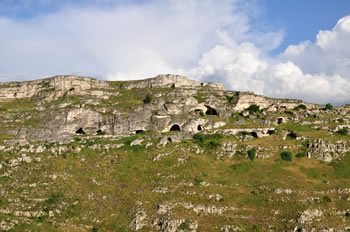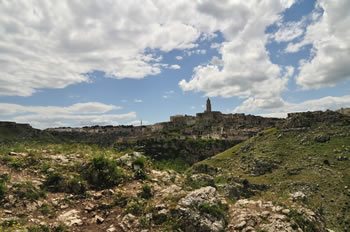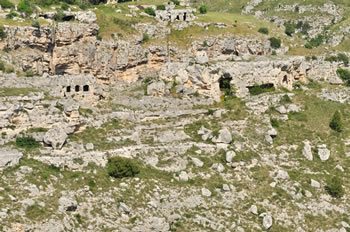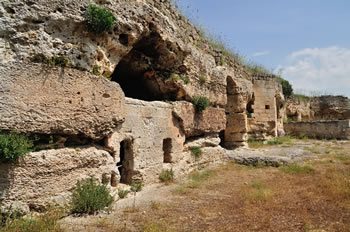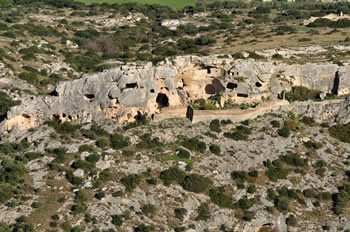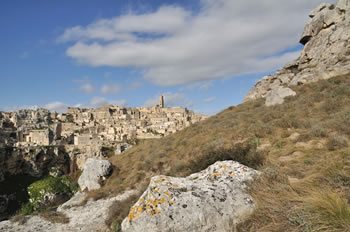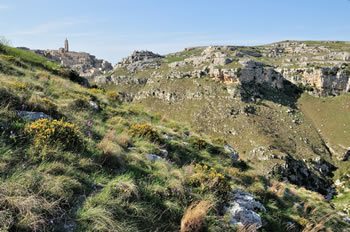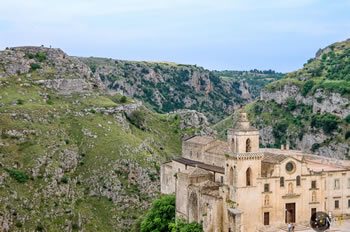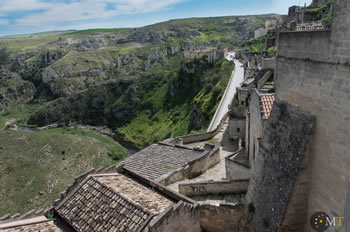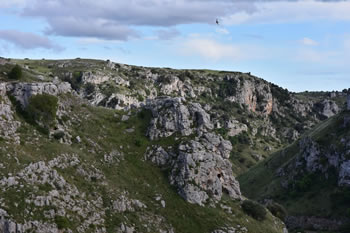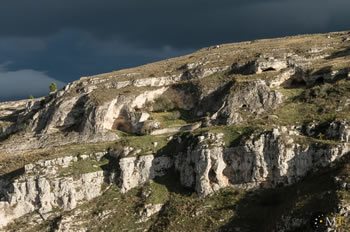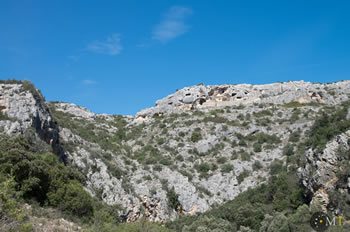The Natural Historical Archaeological Park of the Rock Churches of Matera, also known as the Murgia Materana Park, surrounds the city of Matera.
Skirting the Sassi, it extends on the opposite side of the canyon for about 8,000 hectares.
A large part of the canyon carved by the Gravina stream and the twenty kilometers traveled by the stream from the border with Apulian territory to the confluence with the Bradano River in the south, affecting the municipalities of Matera and Montescaglioso, fall within the park.
In the Murgia Park, different environments alternate according to sun exposure, soil type, and the presence or absence of water. Walloons, hanging valleys and Gravinelle are interspersed with the riverbed and punctuated by terraces and plateaus.
Dominating over all is the fluvial environment formed by the creek bed and the valley that the creek has carved into the rocks over the past million years. The banks of the deep and characteristic canyon locally called the ravine, can exceed 100 meters in height in some places.
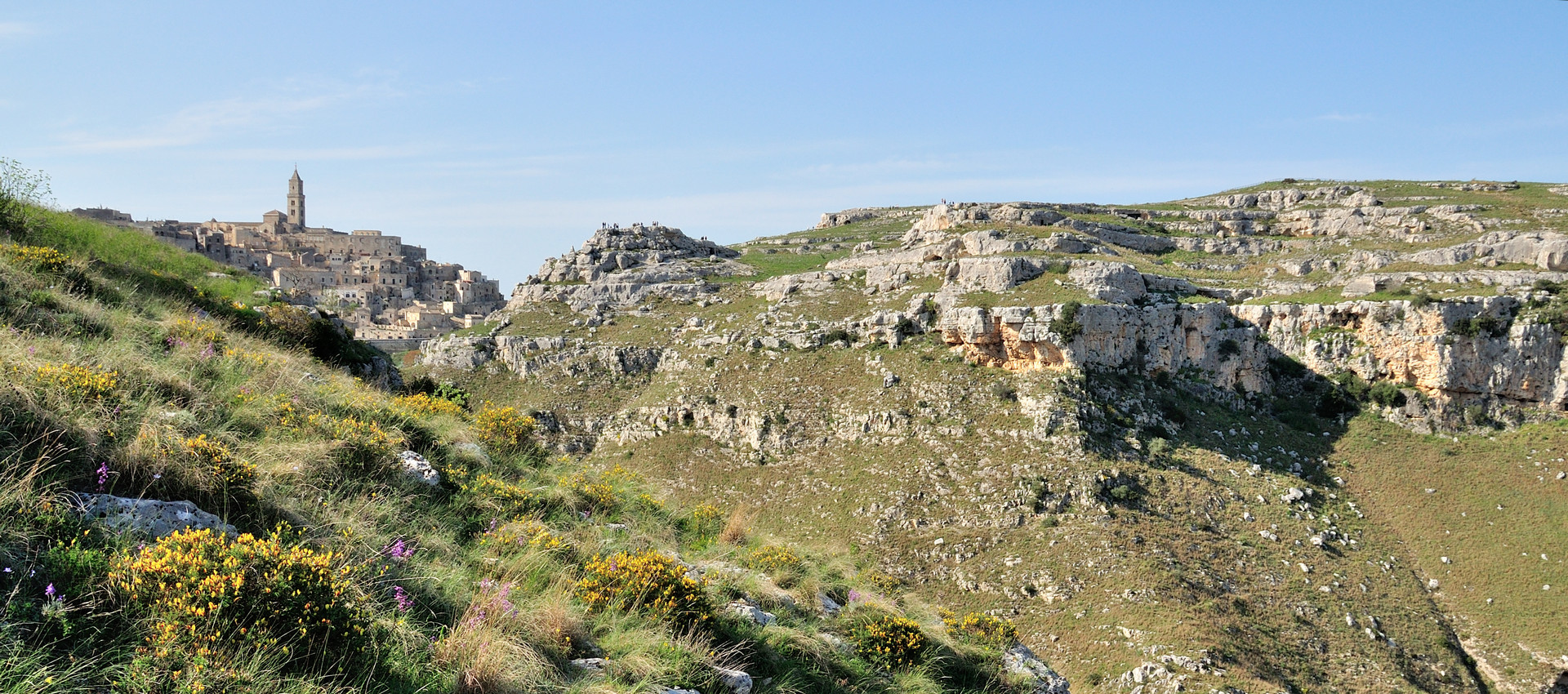
Murgia Park
Different environments alternate in the Murgia Park according to sun exposure, soil type, and the presence or absence of water. Walloons, hanging valleys and Gravinelle are interspersed with the riverbed and punctuated by terraces and plateaus.
Dominating over all is the fluvial environment formed by the creek bed and the valley that the creek has carved into the rocks over the past million years. The banks of the deep and characteristic canyon locally called the ravine, can exceed 100 meters in height in some places.
Dominating over all is the fluvial environment formed by the creek bed and the valley that the creek has carved into the rocks over the past million years. The banks of the deep and characteristic canyon locally called the ravine, can exceed 100 meters in height in some places.
Visiting the Murgia Park
Those visiting Matera must also visit the Murgia Materana Park.The main places of interest in the park are the Belvedere and the archaeological area of Murgia Timone, which are located on the other side of the ravine at the Sassi.
To reach them by car you have to drive along State Road 7, direction Bari, and follow the signs for Taranto.
After a few kilometers from the junction, the entrance to the Park is indicated on the right. Taking the narrow road leading to the Belvedere, one passes through several places of interest.
With a walk of about a kilometer, it will be possible to visit the rocky complex of S. Nicola at Via Appia, Murgia Tre Ponti and the rocky church of San Falcione.
For those arriving by car or bus, once they arrive at the square and park their vehicle, it will be possible to hike along the eastern side of the ravine, or visit the nearby rock churches of Madonna delle Tre Porte and Sant’Agnese.
Taking the Park’s belvedere path it will be possible to reach the Neolithic villages of Murgia Timone and the rock church of Madonna delle Croci. It is advisable to request a licensed hiking guide for this trail.
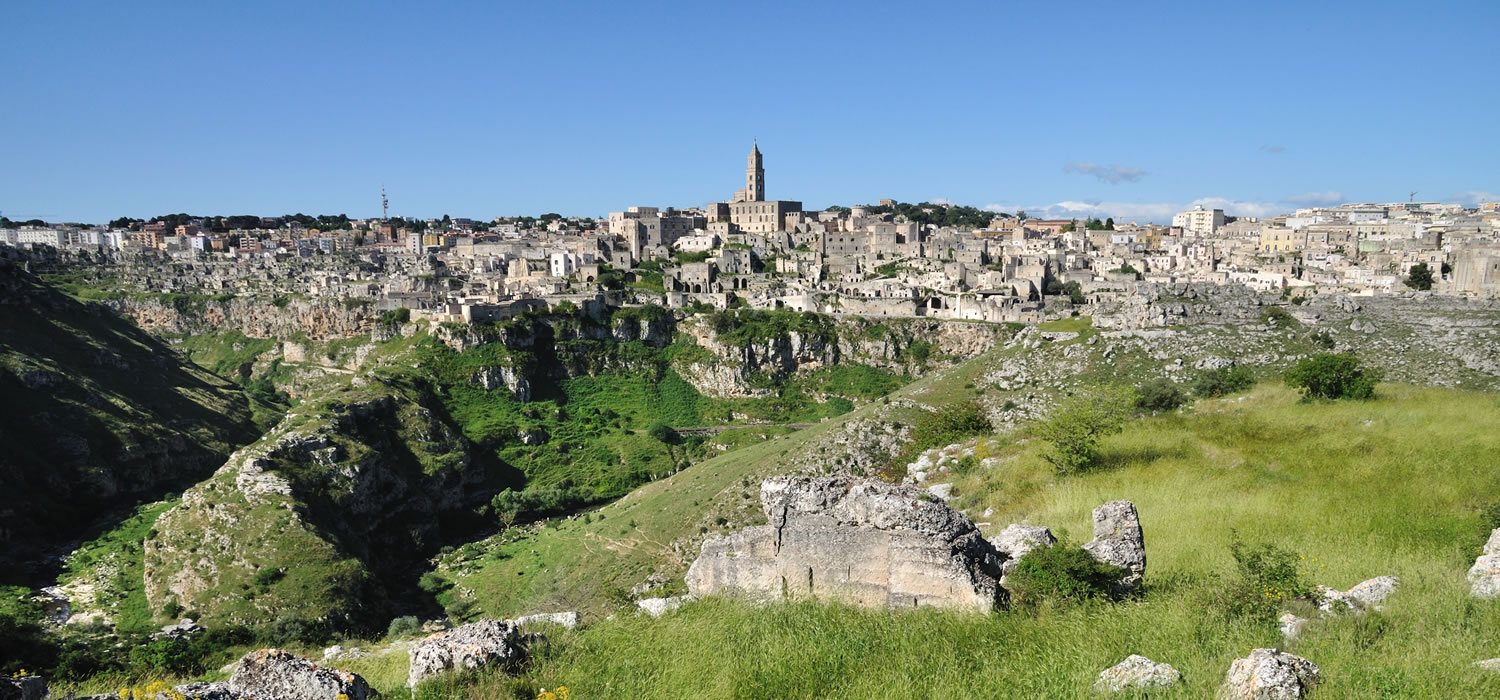
Contrada Palomba
This area located at the northeastern entrance to the city of Matera is characterized by the presence of several impressive tuff quarries.
One of these is home to the Palomba Sculpture Park, a place where contemporary art by internationally renowned artist Antonio Paradiso blends with the rocky landscape of the quarry. Grand works in iron and stone provide a counterpoint to a unique and fascinating cultural landscape.
Not far from the Sculpture Park is one of the most important Marian shrines in the Matera area dedicated to Santa Maria della Palomba. The religious complex is situated overlooking the ravine in one of the most important rocky areas in the surrounding area.
Contrada Murgecchia
One of the most significant places in the Parco Della Murgia Materana, this is a vast area accessed via a small road adjacent to the Palomba monumental complex, again from State Road 7.
In this vast, mostly barren limestone plain are some of the entrenched Neolithic villages-the only remaining examples of a typical Apulian Neolithic settlement pattern.
Along with the villages investigated in the early twentieth century by the Matera doctor and archaeologist Domenico Ridola, there are also Bronze Age necropolis and several rocky complexes reaching back to the Middle Ages.
This area located at the northeastern entrance to the city of Matera is characterized by the presence of several impressive tuff quarries.
One of these is home to the Palomba Sculpture Park, a place where contemporary art by internationally renowned artist Antonio Paradiso blends with the rocky landscape of the quarry. Grand works in iron and stone provide a counterpoint to a unique and fascinating cultural landscape.
Not far from the Sculpture Park is one of the most important Marian shrines in the Matera area dedicated to Santa Maria della Palomba. The religious complex is situated overlooking the ravine in one of the most important rocky areas in the surrounding area.
Contrada Murgecchia
One of the most significant places in the Parco Della Murgia Materana, this is a vast area accessed via a small road adjacent to the Palomba monumental complex, again from State Road 7.
In this vast, mostly barren limestone plain are some of the entrenched Neolithic villages-the only remaining examples of a typical Apulian Neolithic settlement pattern.
Along with the villages investigated in the early twentieth century by the Matera doctor and archaeologist Domenico Ridola, there are also Bronze Age necropolis and several rocky complexes reaching back to the Middle Ages.

 Home
Home
